-
When you click on links to various merchants on this site and make a purchase, this can result in this site earning a commission. Affiliate programs and affiliations include, but are not limited to, the eBay Partner Network.
-
Posts
719 -
Joined
-
Last visited
-
Days Won
7
Content Type
Profiles
Forums
NGC Journals
Gallery
Events
Store
Downloads
Posts posted by Yarm
-
-
A bronzed example of Middlesex 24 by John Milton. This penny size token/medal was produced by J. Rebello as a memorial to his father Thomas Alves Rebello. The elder Rebello had issued his own token, Middlesex 309, just a year before.
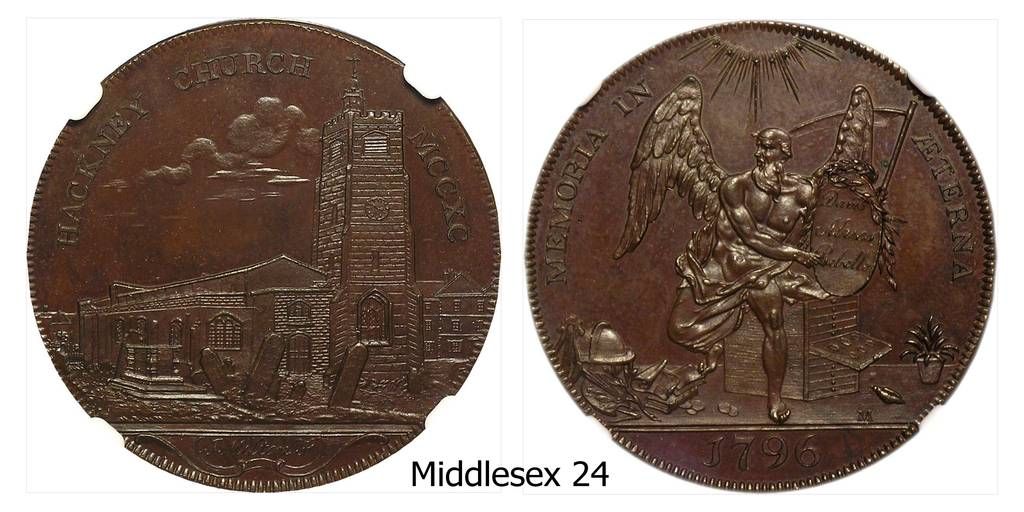
-
A farthing size token from the Uxbridge School in Middlesex, UK. BWS 4960; Batty 576, 19th century. I'm a turtle guy!
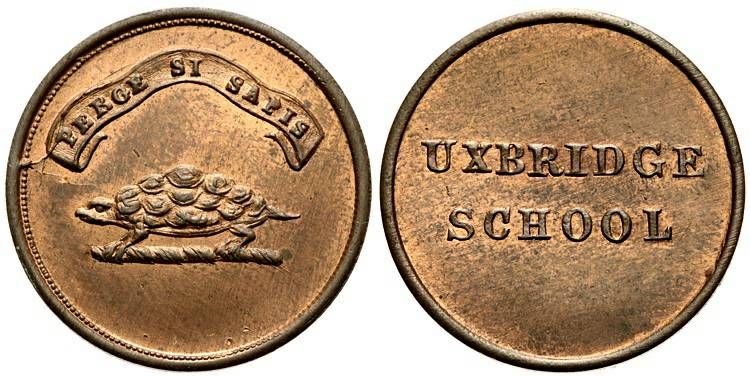
-
Just getting back into the photographic aspects of the hobby-a Durham Sunderland 2 penny.
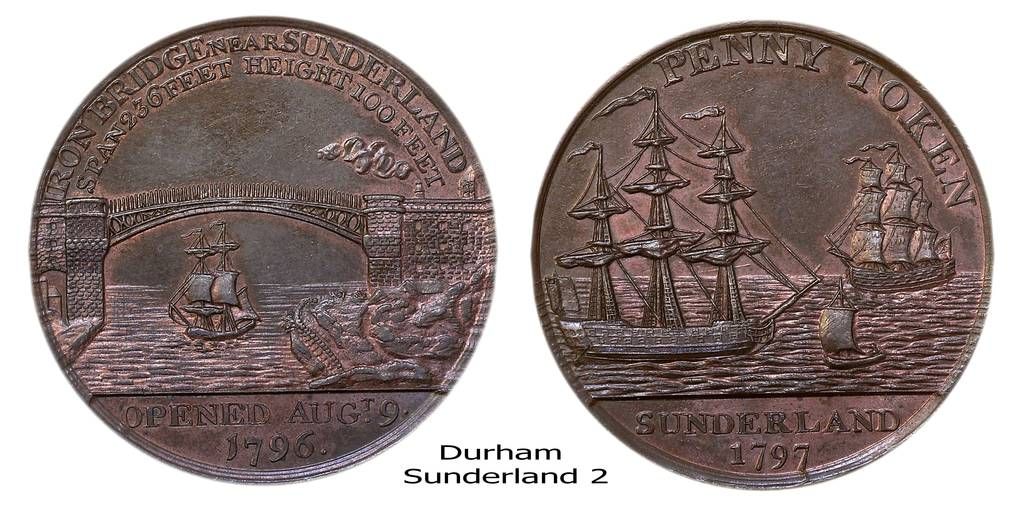
-
Another Chatham purchase, Warks 184b, with what is listed as an engrailed edge. Unlike my other engrailed items, there is a sine wave the width of the edge.
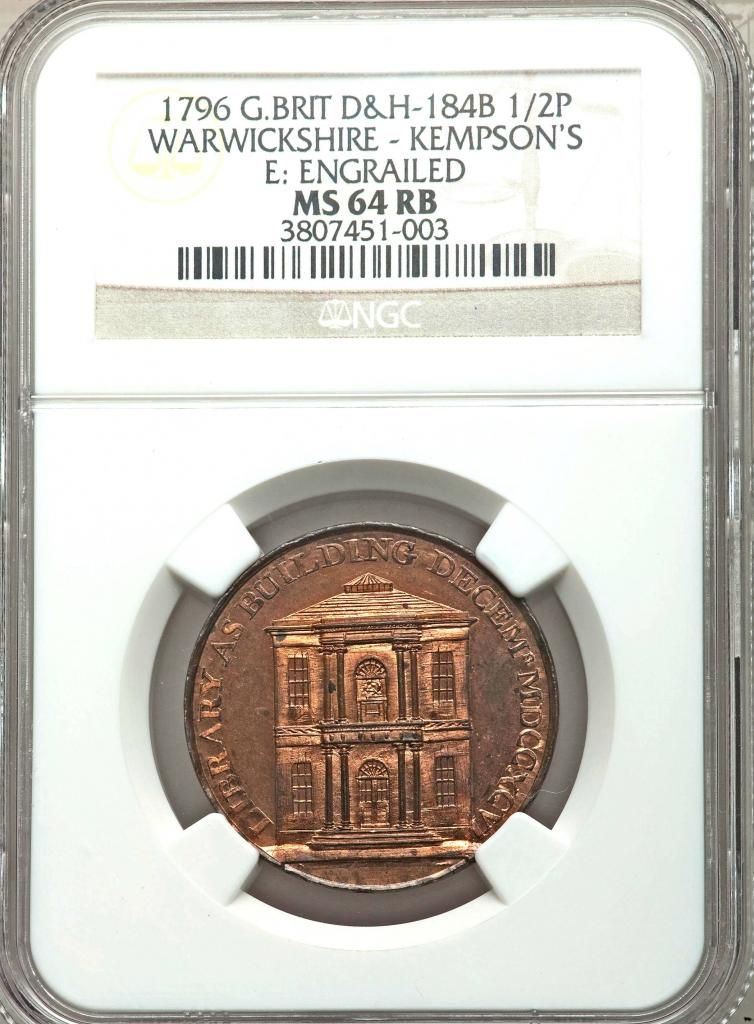

-
My contribution to this odd "bis-ness", Middlesex 181 bis II.
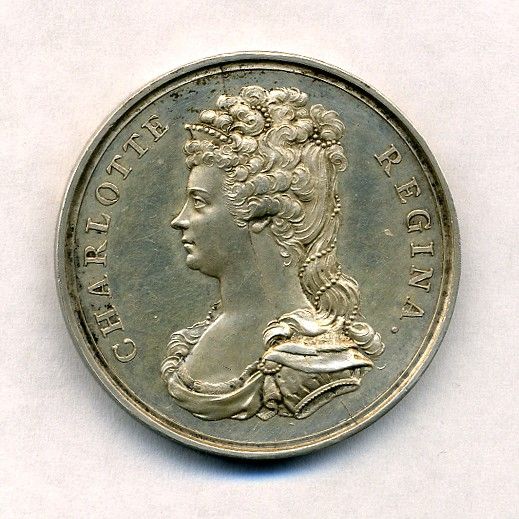
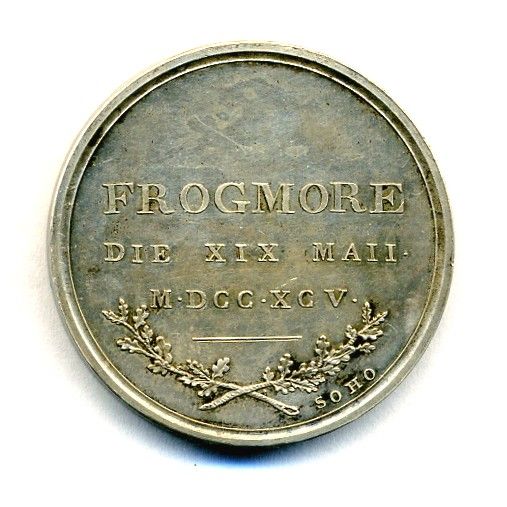
-
This bis business sent me running to my online D&H.
"Bis became a kind of cataloguing panacea for Dalton and Hamer. They used the term in several different circumstances, in each of which there is a relationship
between a token already assigned a number and the discovery token. However, the connection between the two is stronger in some cases and weaker in others.
For example, one can find “bis” tokens that could have any of the following features:
1) Minor differences in one die or the other, i.e., a slight shift in a certain feature, or the addition or removal of a period [Middlesex 235 – 235 bis II]
2) Share one die in common and have a different reverse or obverse (sometimes blank, as with uniface die trials) [Middlesex 289 bis and Warwickshire 43 bis]
3) Share no dies in common but the design or concept is similar to a catalogued token [Middlesex 213 – 213 bis II; Middlesex 1052 bis]"
I'm thinking Midd 583 bis falls into category 3.
-
From Heritage's Chatham sale, Middlesex 88, a penny in Skidmore's London and Westminster series.
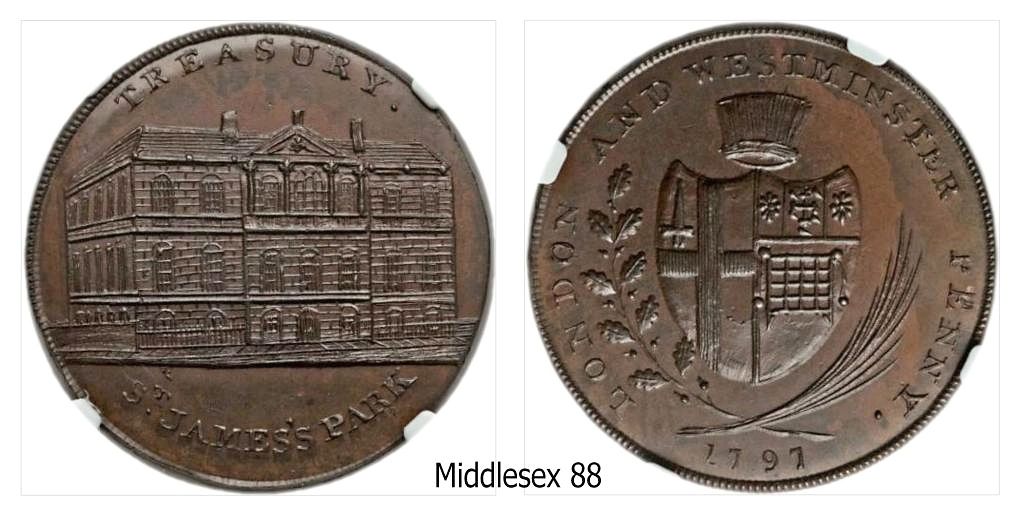
Heritage posted a summary of the Chatham auction which indicated there were 175 bidders, 48 of whom were successful, for the 383 lots.
-
Award medal of the UK's National Chrysanthemum Society, 27mm under glass by Spink and Son.
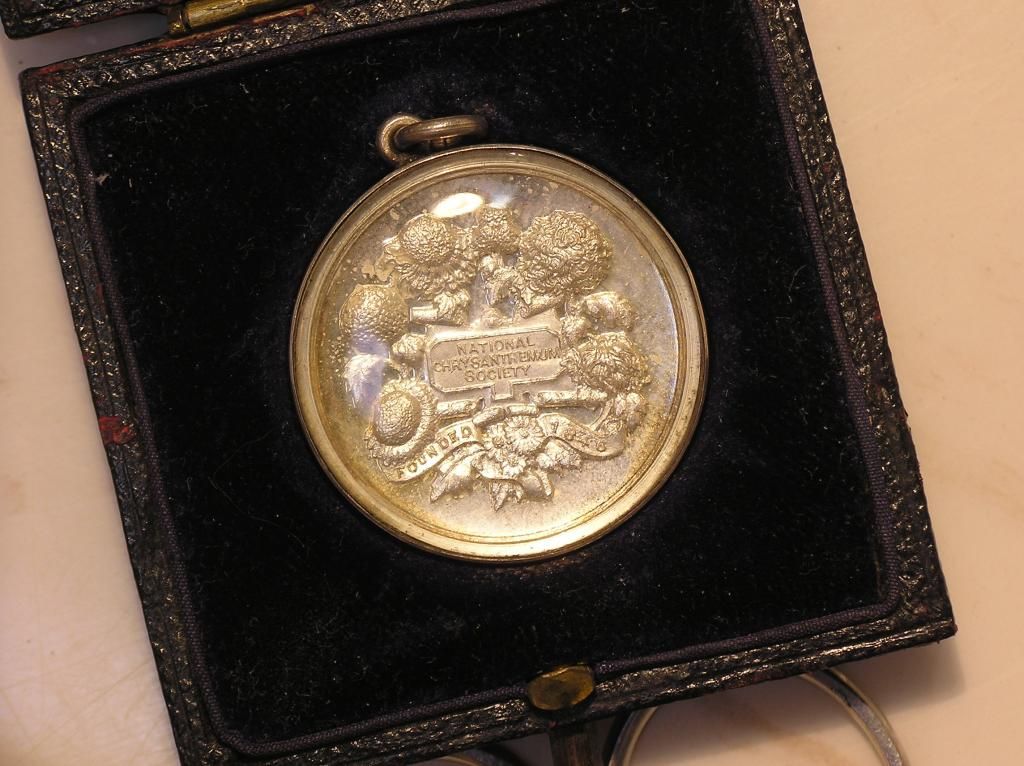
-
Satirical Spence farthing, Middlesex 1100. "If the law requires it, we will walk thus." and "Am I not thine "
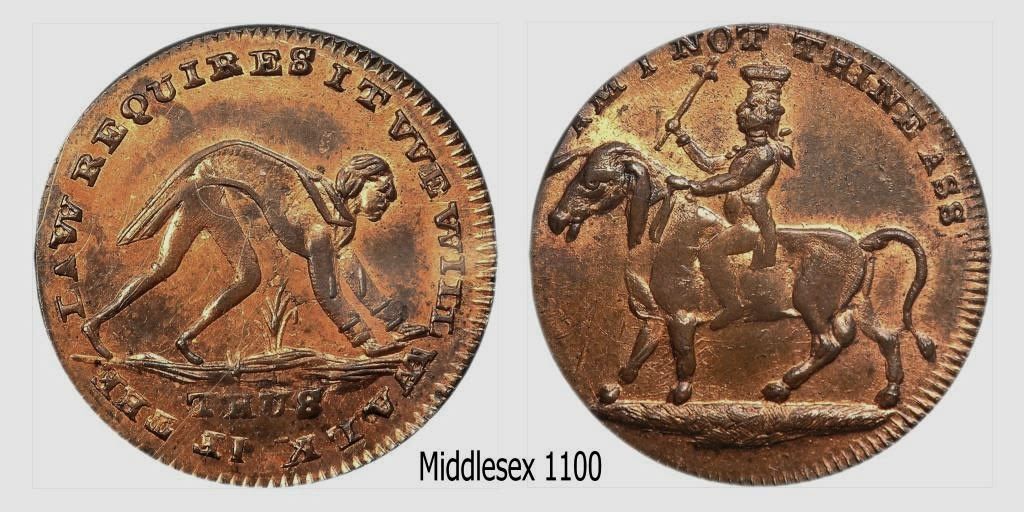
-

Hard Times, there are some Conder tokens that were struck so as to produce a convex surface. Is that what I'm seeing on the obverse of your M312b?
yarm
-
I noticed the Yorkshire 13d, Beverley pawn broker token in Marshall 2 as one that I had been offered before. There's some oddness here.
1) Notwithstanding Heritage's description below, the token was struck on a Foundling Fields halfpenny, probably Midd 305,
with the lettering clear on both sides. I like my MS65's a bit "cleaner" and without an inked collector number.
"Yorkshire. Beverley 1/2 Penny Token 1797 MS65 Brown NGC, DH-13d. E: \\\. Struck over an earlier anti-slavery type..."
2) Jon Lusk's system for designating a Conder token as a Genuine Trade Token has swept in Yorkshire 13 (barely),
this despite a disqualifying condition "Not made in bulk" if less than 480 halfpenny tokens were produced. I'll take the under.
3) D&H includes several RRR edge varieties for Yorkshire 13 with the notation that "These were struck over other tokens and,
in many cases show portions of the old inscription". So, a Yorkshire 13 token struck over a Foundling Fields token with milled edge
becomes the RRR Yorkshire 13d with milled edge but a Yorkshire 13 token struck over a North Wales 12 stays Yorkshire 13
because both had a plain edge.
Only 308 more tokens to look through.

yarm
-
Hard Times-That is an interesting pair! Can there be a Die State III?
Farthing- Nice pieces! So far, you're only the third US collector who I've noticed has posted Baldwin's basement purchases.
-
I've been working my way through Jon Lusk's recent book. Although my focus is not on genuine trade tokens, it's nice to have a fresh look at the topic (along with great photos)!


-
From the recent Baldwin's "basement" sale, Yorkshire 1 by Skidmore. Long-term storage with the castle side down may explain the different toning on the obverse and reverse.
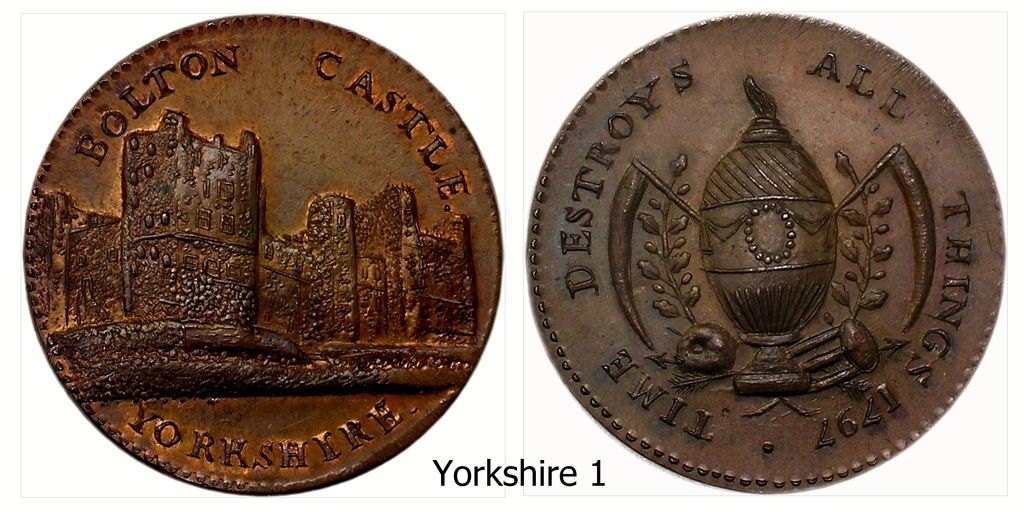

-
I was following the enthusiastic bidding for Pidcock tokens in the Marshall I sale at Heritage but blinked when I saw the results for Middlesex 424, Lot 15234. Is this one of those hidden or misattributed rarities or just an example of auction fever?
-
I was curious what it took to get a MS65 grade for a white metal medal so I went after this one on Ebay. In my experience, white metal doesn't hold up very well over time and any marks or wipes show up glaringly.
This medal of Victoria and Albert (BHM #2419) is housed in the old style large holder. It's a lot lighter than the current jumbo holders.
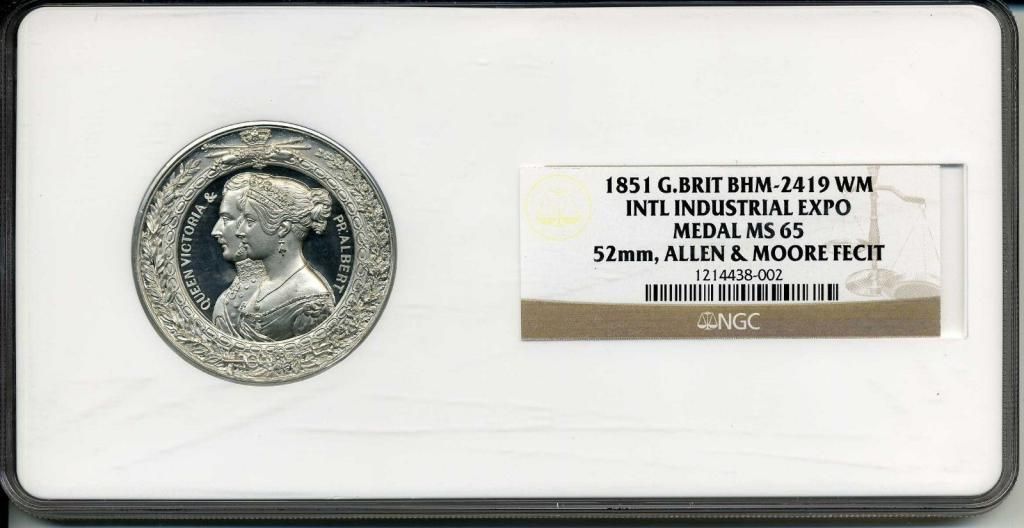
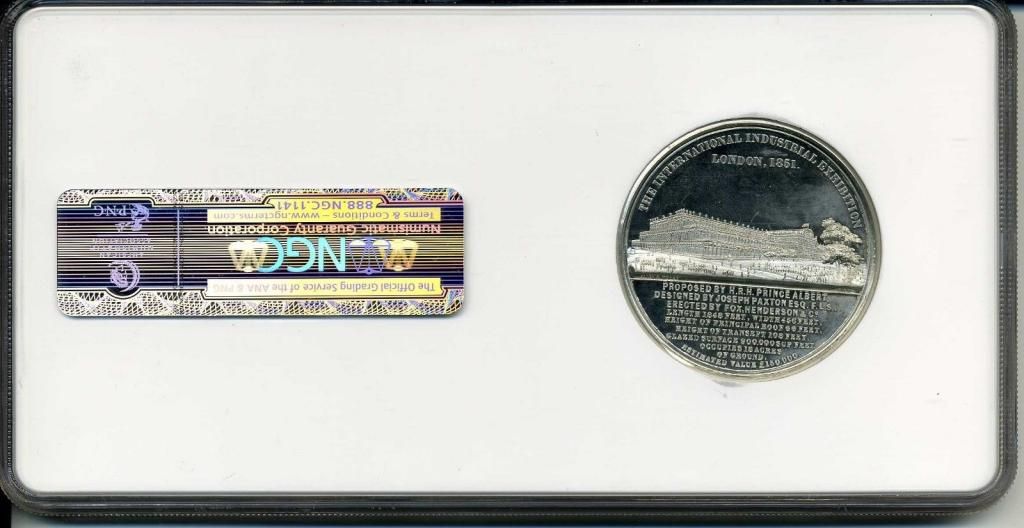
-
Robert Orchard appears to have done quite well as a London grocer with progressively more artistic tokens issued over time.
Here's his 1798 halfpenny by Jacobs (Middlesex 403), struck on a somewhat larger flan than most halfpenny tokens.
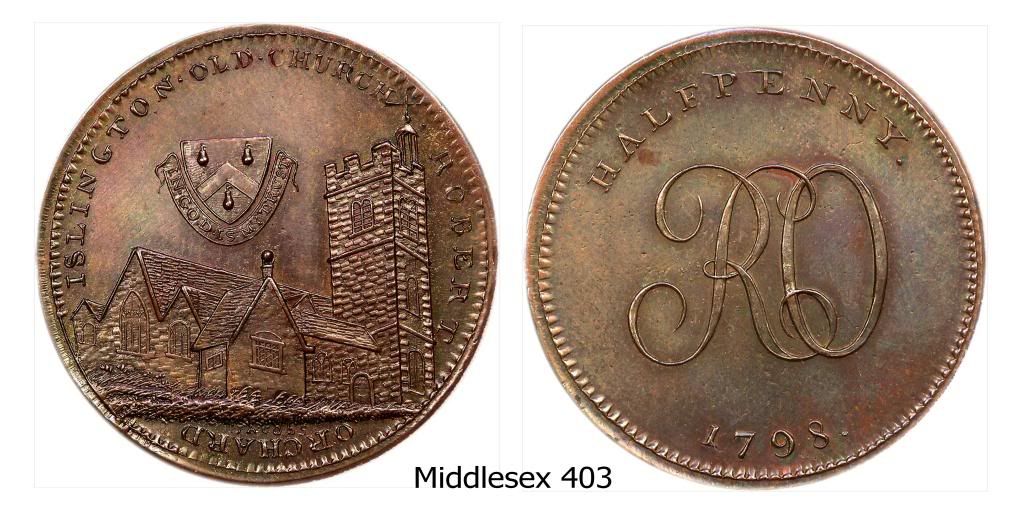
-
Although bronzed and copper tokens might show up in a population report as "BN",
bronzed examples tend to be uniformly brown like medals while copper examples often
exhibit some variation in color. This Conder token is Middlesex 24 one of the early private issues.
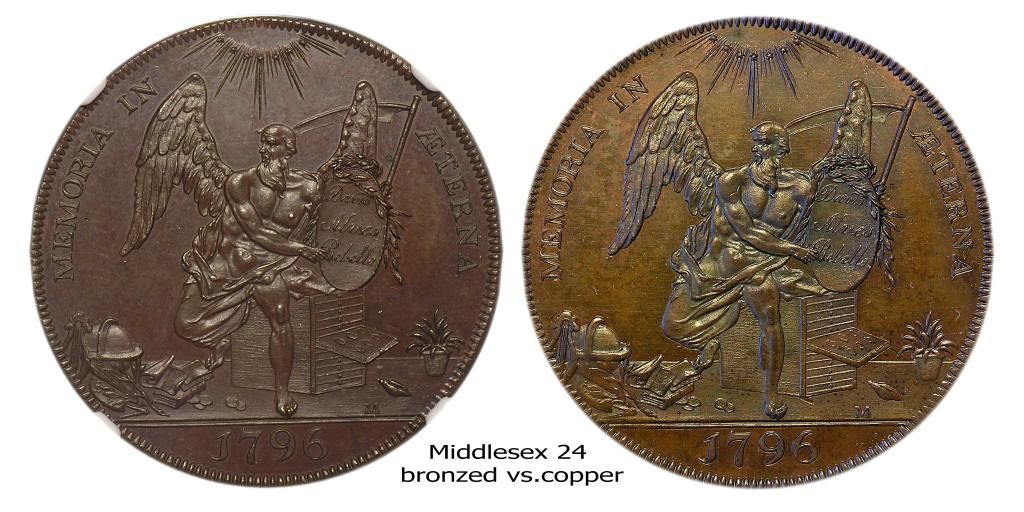
-
Has all the hoopla re Pidcock tokens subsided? I thought it would be neat to assemble
a group of halfpenny tokens that display all the possible Pidcock designs
(13 tokens) but I want to be sure no one is interested any longer in those yucky things!


-
Compared to Conder tokens (which were saved in quantity), it's tougher to find uncirculated examples of the "industrial" British tokens of 1811-12
as catalogued by Withers. Most were used in commerce and were not produced or imitated to cater to token collectors. Here's an example
of a twopence (Withers-910) in decent condition from a recent Eric P. Newman sale.

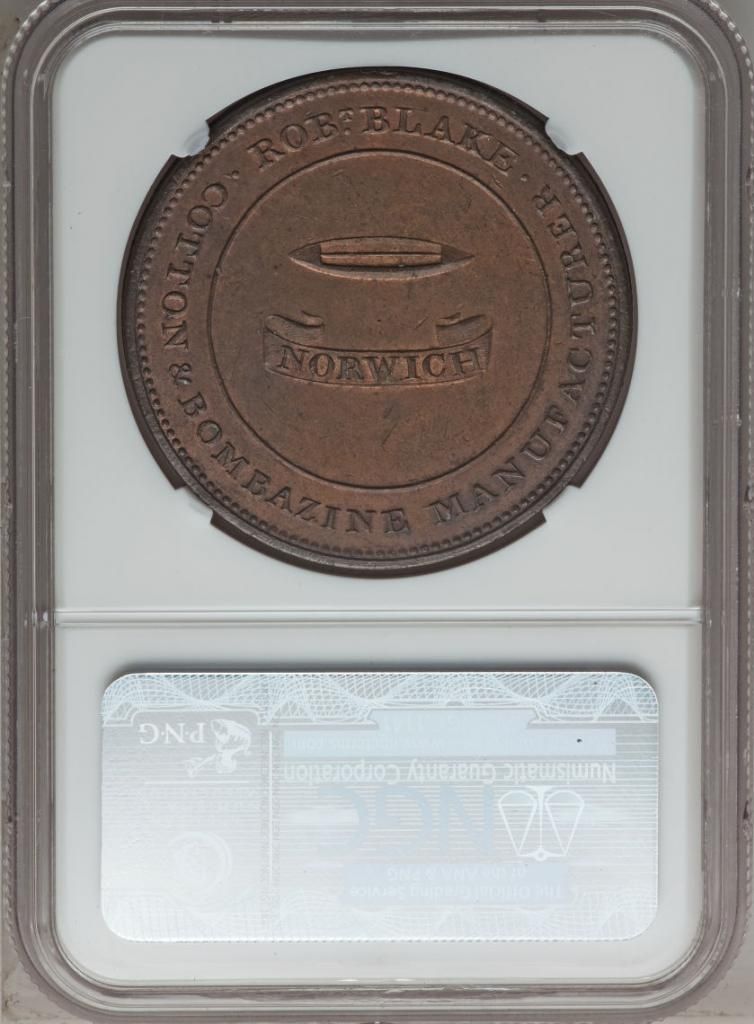
-
Once in a while I come across a Conder token with an identifiable undertype. This is a Yorkshire Beverley 13 halfpenny struck over North Wales 12.
Features of the North Wales halfpenny are visible on both the obverse and reverse.
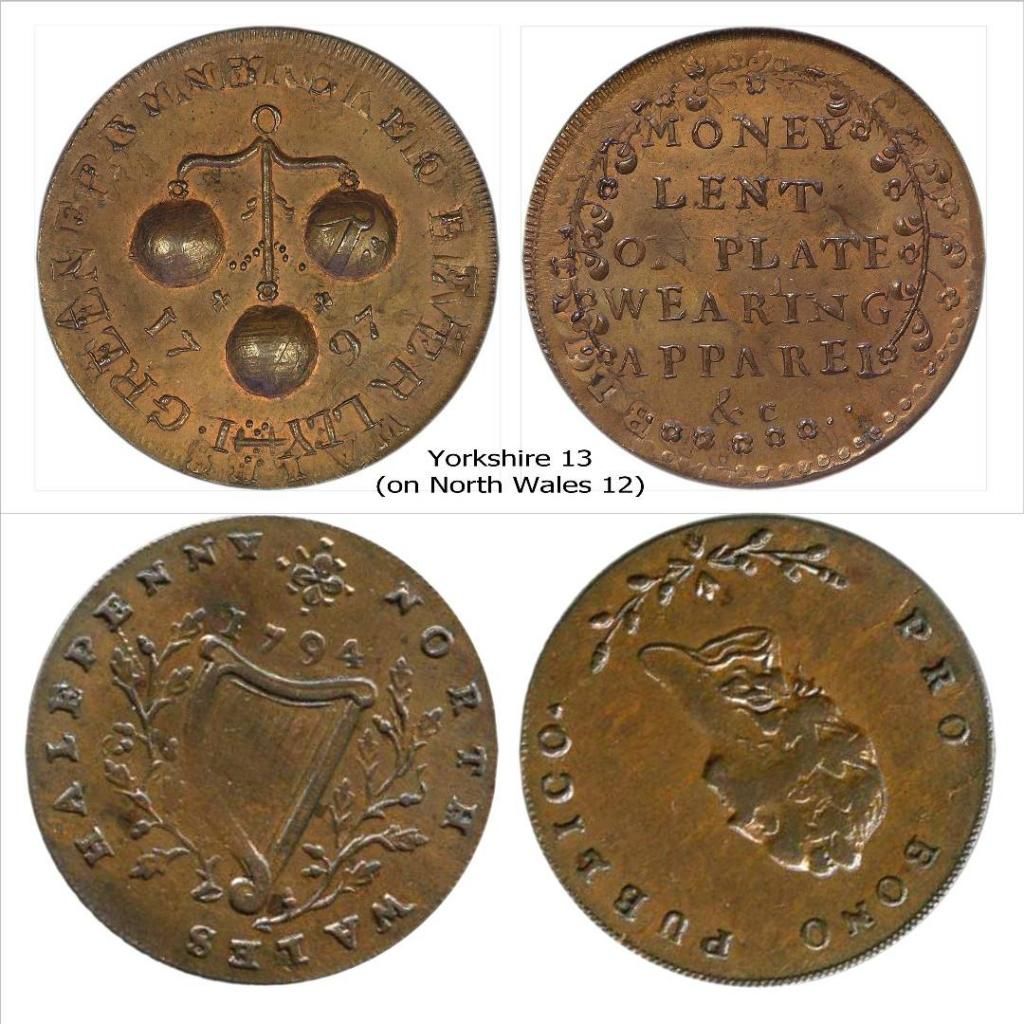
-
While researching this penny token by John Milton (Middlesex 24), I came across a 1903 article by S. Hamer in the British Numismatic Journal
regarding the background and mintages of many of the private tokens within the Conder series. The first token in the article (Middlesex 309)
is an example of a token with a reported mintage (24 in copper) that seems at odds with the number of auction appearances and availability
of the token in dealer inventories. Perhaps there were follow-up orders after the original strikings.
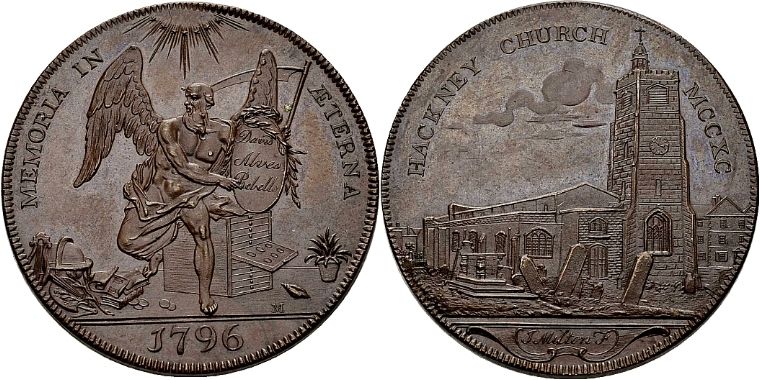
-
I received my first PCGS medal in one of their mid-size holders. The medal is 48mm in high relief and the holder looks like it could easily accommodate a medal up to at least 70mm.
I've been unsuccessful so far in trying to photograph through the slab, so here are the seller's pictures.
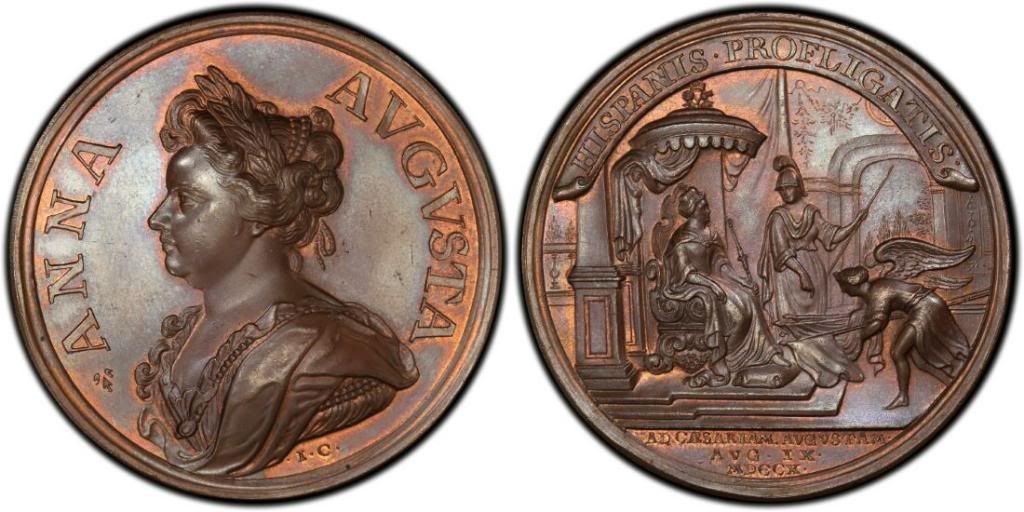
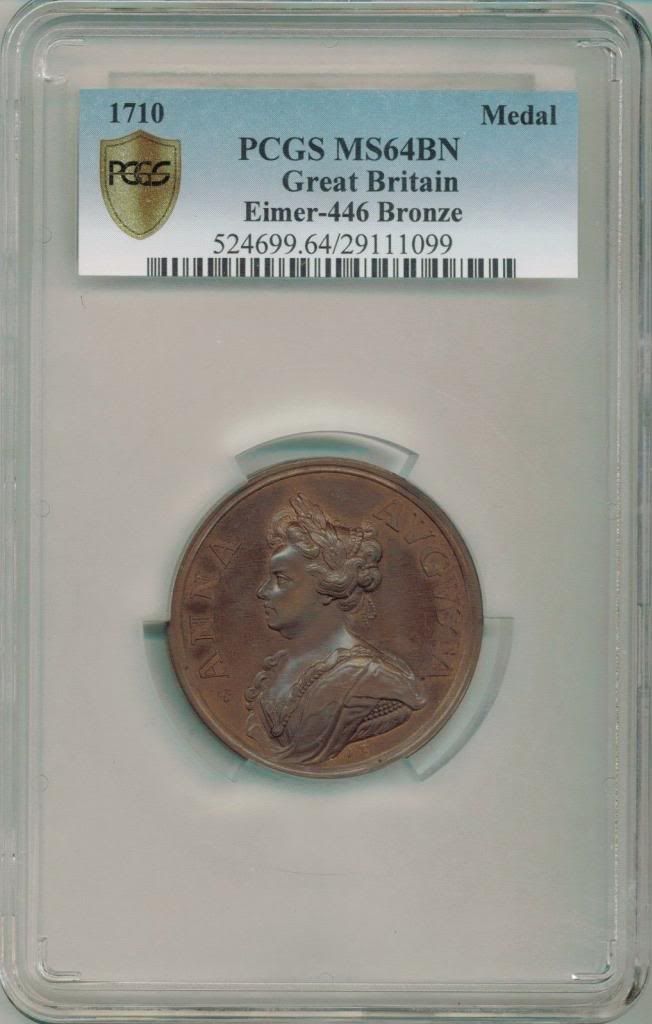
-
BHM #526, Union of Ireland and Great Britain, 38mm in white metal by Hancock and Kempson.




Conder Collectors - Post Your Images
in US, World, and Ancient Coins
Posted
As long as we're into the details...
Midd 853